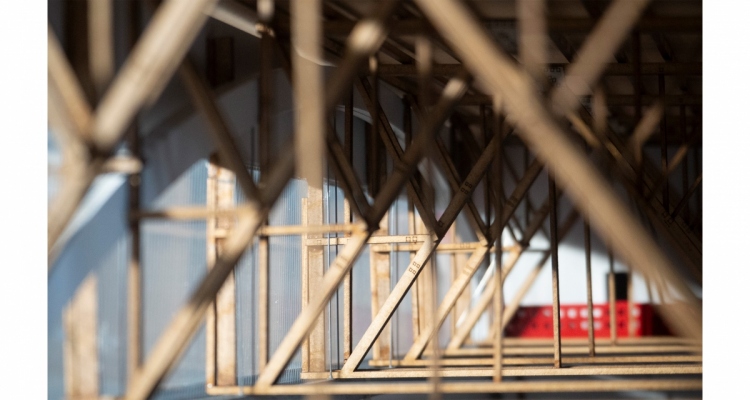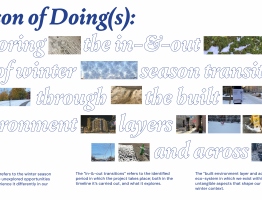Diploma project
Autumn 2023
Institute of Architecture
Coexistence by using current conditions.
At the Lista Peninsula, on the south-west tip of the Norwegian coast, there is an almost 3 km long landing strip for airplanes. First built by the Germans during the second world war, then taken over, expanded, and furthered by NATO from 1954, before being reduced to a smaller airport in 1996 with parts of the property being leased for industry. Today, there is an ongoing discussion on how to use the areas around the airpark.
The Lista landscape is unique in the Norwegian context. The coastal wetlands have been given international protection as it hosts thousands of migrating birds from all over the northern hemisphere. Marsh, bogs and turfs are among the world’s most productive environments. They face, however, constant threats from human activity.

This diploma is an investigation of how the land is affected by human development and how resources are used and understood. How does humans impact the land, the land act the human? How might one look for structures; humanmade, landmade, animalmade? How does these structures act on the human, the land, the animal? How do we look at structures?
Stories and anecdotes from Lista are weaved into the thesis, allowing the past, present and future to interplay with the land, the human and the non-human. By using current conditions the project facilitates new industry. The program introduced allows for changes in use, but few impacts on the existing structures. In my project I want to explore the difference between utilizing and exploiting, and how to plan for the future with what is present. By using current conditions the project facilitates coexistence on three scales. The animal, the human and the machine are present in all of them. What are the current conditions and what can they provide for the future of right now?
The work studies the relations between the living and the non-living; between geological features and animals and humans, humans and animals and human-made structures. In this work I have investigated those relations; using Lista, the airport and the hangar-building as mediators to develop and explore new ways of looking. The work is divided in three scales:
1:7500 : A landscape for human, animal, machine. Land
1:750 : An infrastructure for human, animal, machine. Site
1:75 : A construction for human, animal, machine. Structure

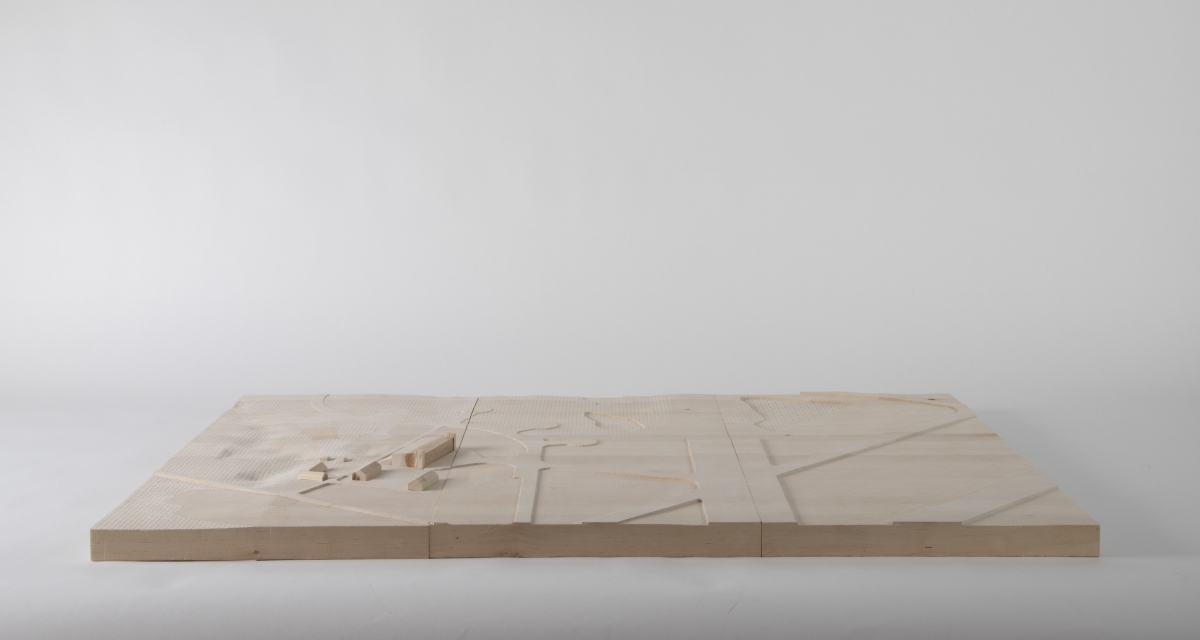
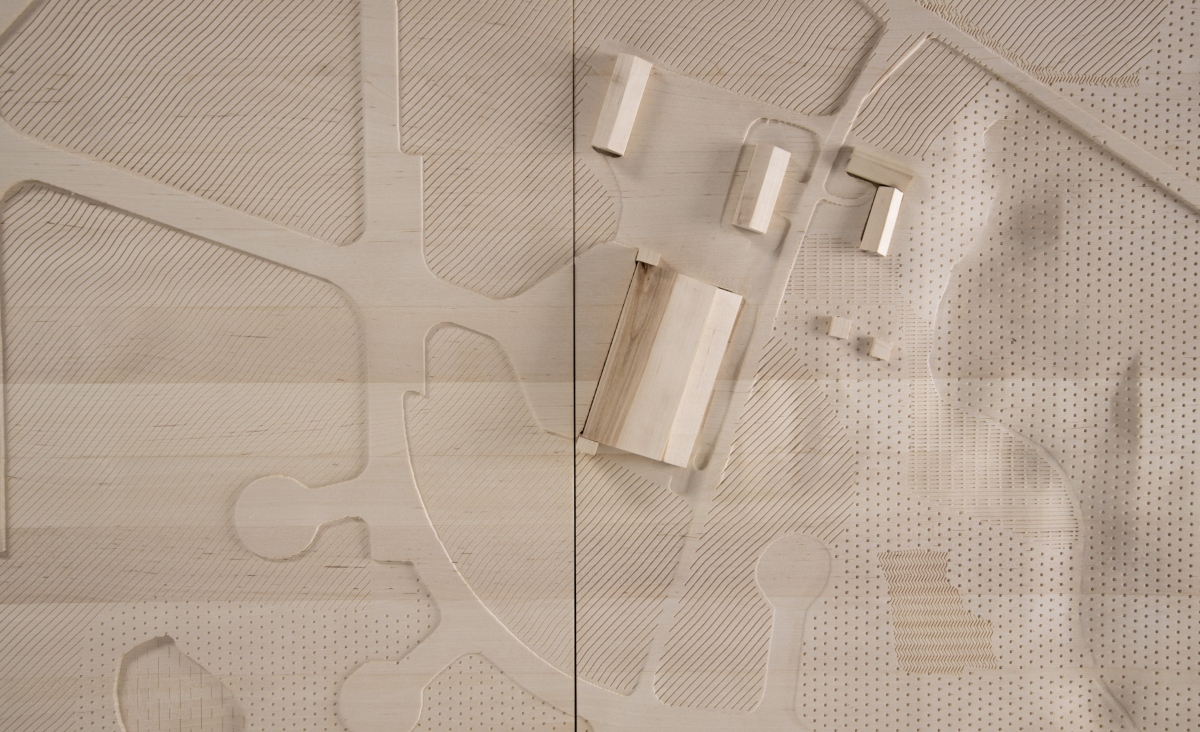
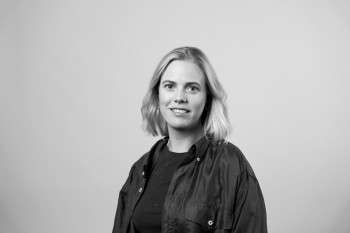
Helene Aasgaard / heleneaa@hotmail.com
At the Lista Peninsula, on the south-west tip of the Norwegian coast, there is an almost 3 km long landing strip for airplanes. First built by the Germans during the second world war, then taken over, expanded, and furthered by NATO from 1954, before being reduced to a smaller airport in 1996 with parts of the property being leased for industry. Today, there is an ongoing discussion on how to use the areas around the airpark.
The Lista landscape is unique in the Norwegian context. The coastal wetlands have been given international protection as it hosts thousands of migrating birds from all over the northern hemisphere. Marsh, bogs and turfs are among the world’s most productive environments. They face, however, constant threats from human activity.

This diploma is an investigation of how the land is affected by human development and how resources are used and understood. How does humans impact the land, the land act the human? How might one look for structures; humanmade, landmade, animalmade? How does these structures act on the human, the land, the animal? How do we look at structures?
Stories and anecdotes from Lista are weaved into the thesis, allowing the past, present and future to interplay with the land, the human and the non-human. By using current conditions the project facilitates new industry. The program introduced allows for changes in use, but few impacts on the existing structures. In my project I want to explore the difference between utilizing and exploiting, and how to plan for the future with what is present. By using current conditions the project facilitates coexistence on three scales. The animal, the human and the machine are present in all of them. What are the current conditions and what can they provide for the future of right now?
The work studies the relations between the living and the non-living; between geological features and animals and humans, humans and animals and human-made structures. In this work I have investigated those relations; using Lista, the airport and the hangar-building as mediators to develop and explore new ways of looking. The work is divided in three scales:
1:7500 : A landscape for human, animal, machine. Land
1:750 : An infrastructure for human, animal, machine. Site
1:75 : A construction for human, animal, machine. Structure




Helene Aasgaard / heleneaa@hotmail.com



